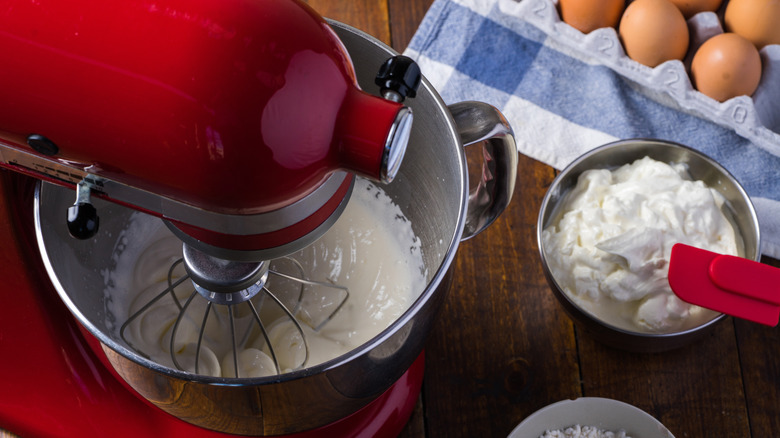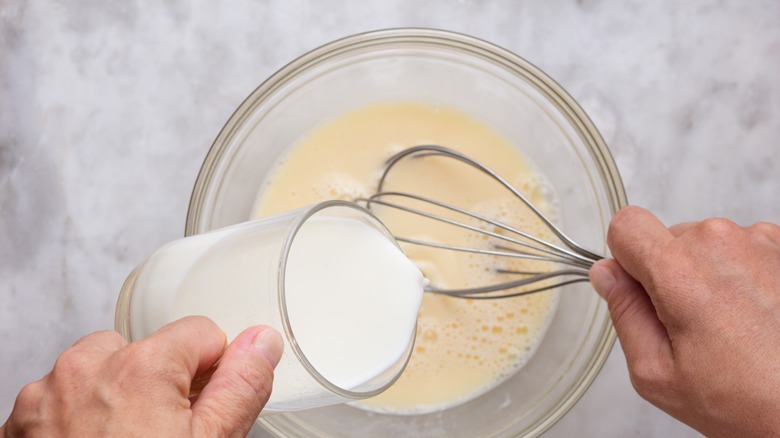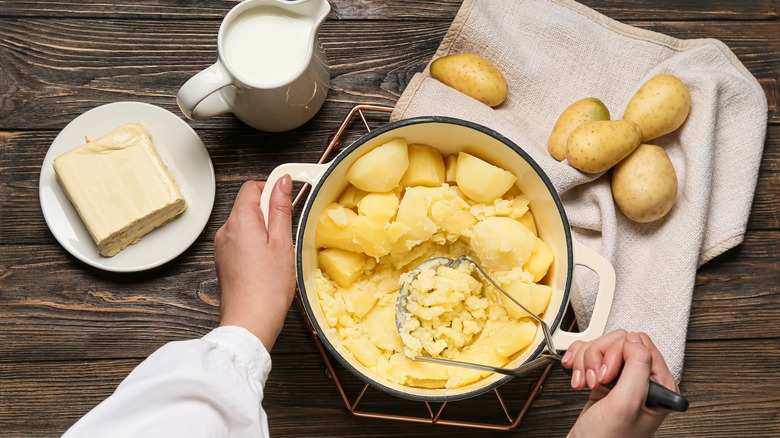For Little Baking Tasks, Skip The Stand Mixer
If you like to bake, chances are good that if you don't already own a stand mixer, there's one sitting in your online shopping cart. Stiff peaks on a meringue, evenly mixed cookie doughs, and perfectly-kneaded bread dough are all a snap with a good model.
Stand mixers have their downsides, however. They're expensive (often $150 to $400) and take up tons of precious counter space. Plus, they're very heavy. If you can't store them on the counter, they're not easy to move from a cabinet or closet. And while stand mixers can do a lot of mixing jobs, they're not the end-all when it comes to cooking and baking.
In the days before electricity, cooks and chefs got by without fancy electronic mixers for centuries. Even now, culinary students are often first trained to mix and knead different classic types of dough by hand to understand cooking science before they can move on to using the appliances. So if a stand mixer isn't in your budget, don't let that hold you back from baking. In fact, stand mixers are actually not the ideal tools for doing many small mixing jobs because the attachments can't touch the bottom of the bowl and won't mix properly. If you want to save the hassle of dragging out your mixer and cleaning all of its parts, pick and choose which tasks actually require a machine and leave the rest to your own two hands.
Stand mixers are meant for larger recipes
If you're a regular baker who started out before you had a mixer, you probably already know that you don't need to pull out the big guns every time a recipe says "whisk," "whip," or "cream."
Stand mixers are designed to mix large volumes of ingredients, such as an entire batch of brownies; the standard bowl size is around 5 quarts for a home model. A lot of times, however, you only need to whip a cup of cream for garnishing some hot chocolate, or a single egg white for a batch of waffle batter. In those cases, making a mess of the stand mixer and all its parts is a waste of time when you can just do it by hand.
Also, stand mixer attachments are not supposed to touch the bottom or sides of the bowl. Over time, the friction will damage the bowl and put a strain on the motor. This is why it's important to stop the mixer and scrape down the outsides and bottom of the bowl periodically when you're whipping up a batch of homemade blueberry muffins so that all the ingredients are mixed evenly. If you're only dealing with a small amount of liquid or batter, your attachments won't even touch the ingredients in the bowl.
When hand mixing is best
Stand mixers can do a lot of the grunt work of whipping and whisking while your hands are free to do other things. Still, they're not foolproof. In fact, it's very easy to over-mix or under mix all kinds of delicate recipes, and there are many instances when hand mixing is a better option.
One of the biggest mistakes people make with yeasted dough, for example, is over-kneading, which will over-develop the gluten proteins and make the mixture too stiff for molding into loaves or stretching into pizzas. Over-mixing will also make bakes with delicate crumbs tough and chewy, so it's better to hand mix things like quickbreads, biscuits, and scones. You can even go overboard with whipping egg whites, which will collapse if you forget about the mixer and let them go too long.
On the savory side, mixers can make quick work of recipes for dishes like mashed potatoes. But again, you can go overboard with the mixing and wind up with gluey spuds. If you're only mashing enough for tonight's dinner, you can make perfectly fluffy potatoes using a ricer or a handheld mashing tool. When in doubt, save the stand mixer for mixing anything more than a quart in volume so that the attachments work properly. And don't walk away from the mixer just because you have your hands free.


